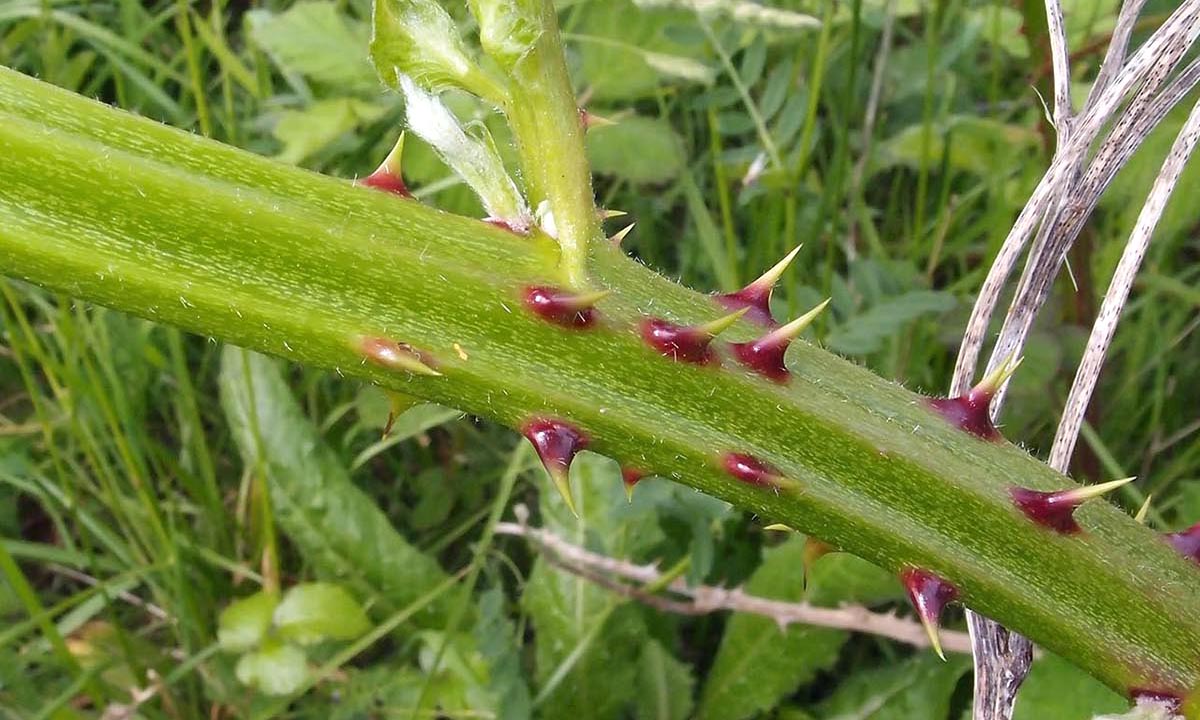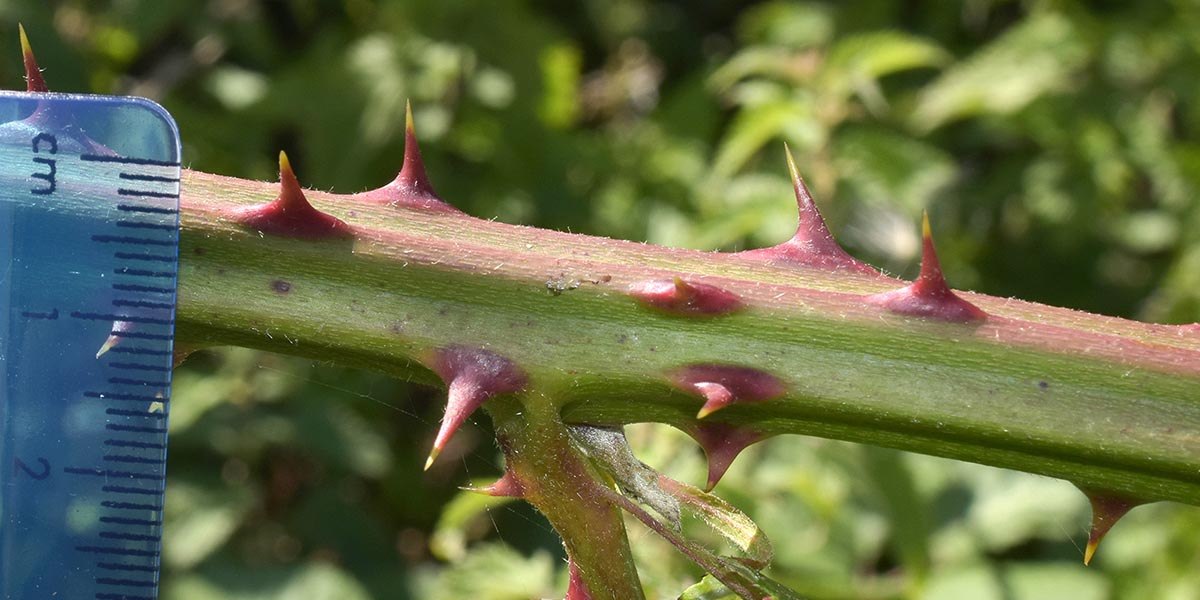
Rubus armeniacus – Series Discolores
back to Alphabetical index · Taxonomic index
This strongly invasive escape from cultivation (formerly known as R. procerus) has increased dramatically in its distribution over the last 50 years and is now common and widespread in all lowland areas of Britain. Known as the Himalayan Giant
its true origin is unclear, but it may have originally been bred from a species native to eastern Europe. It is easily identified by its large size (with especially thick stems), large flowers with pink, broadly rounded petals and long stamens, combined with the Discolores character of the white leaf undersides.

It can grow in dense thickets, typically exceeding 1.5 metres in height. It seems to thrive in fertile, deep soils and is also one of the relatively few species that grows well on calcareous soils. The bushes send out thick, arching stems which eventually reach the ground and root at the tip (like the majority of brambles). It colonises strips of rough grassland in towns and cities where management has been reduced, and then quickly develops into dense clumps or strips, making further mowing impossible. The photo below shows the result alongside a town centre car park in Gosport.
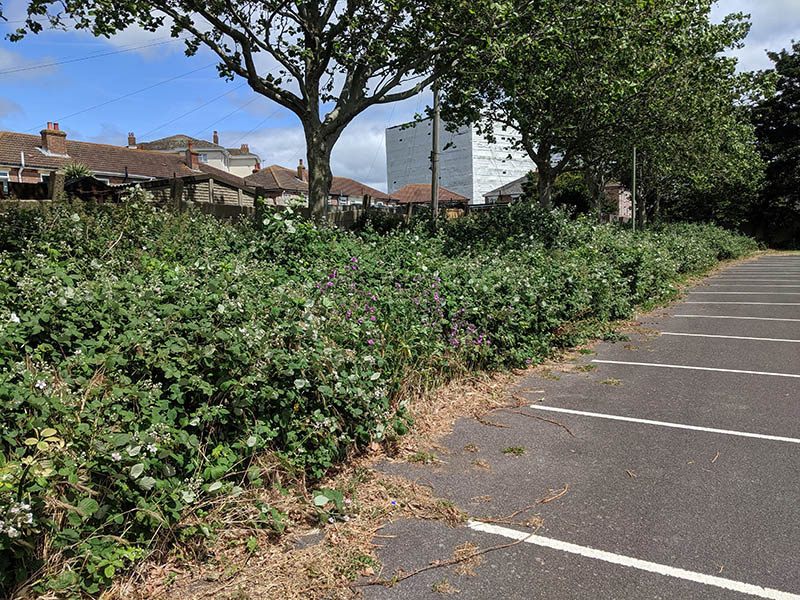

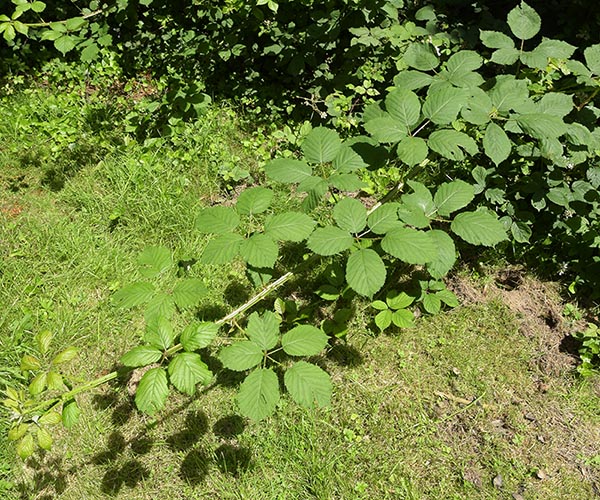
It is a menace in neglected gardens and churchyards and can also take over along the edges of undergrazed horse pastures. It sometimes invades woodland clearings. It is still frequently grown in allotments for its large fruits, but these are actually quite poor in flavour.
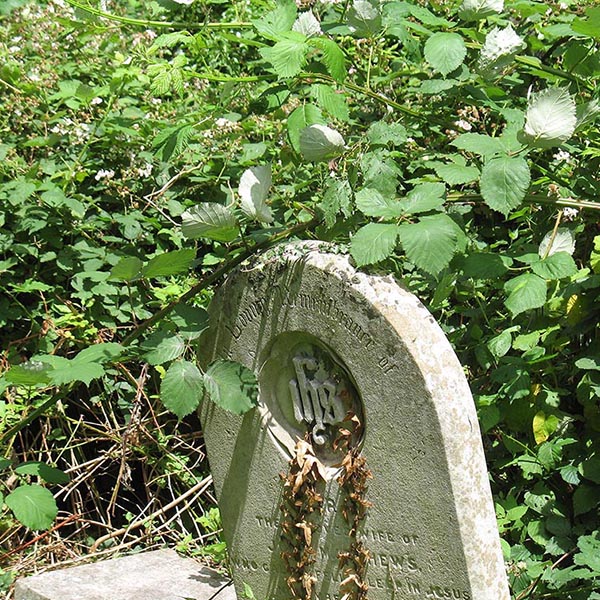

The flowers are about 3.5cm in diameter. The petals are normally touching, except when the flower is fully open. Stamens are very long and the styles are green or reddish.

The leaves are amongst the largest of any bramble. Leaflets are virtually hairless above and sometimes slightly convex. The terminal leaflet is broadly elliptical and can exceed 12cm long on leaves of well-grown stems.
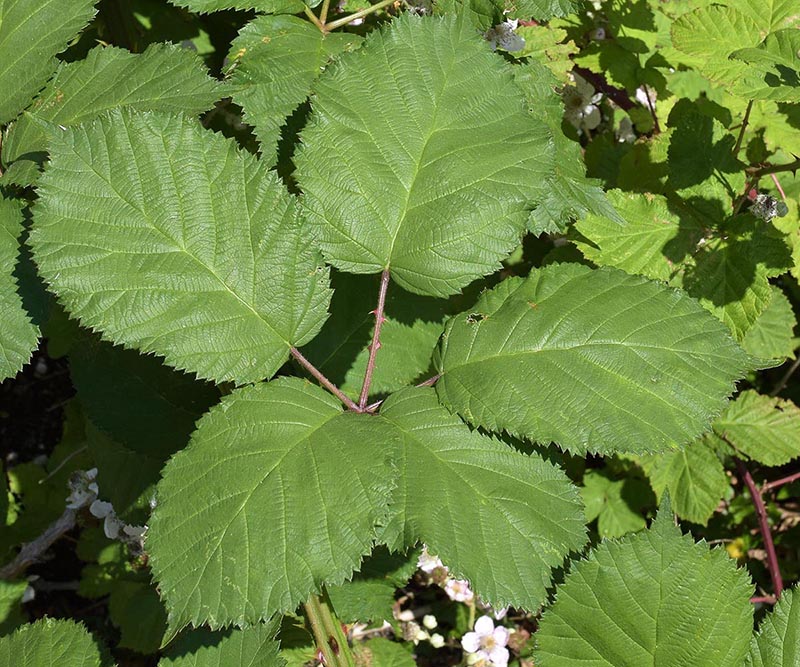
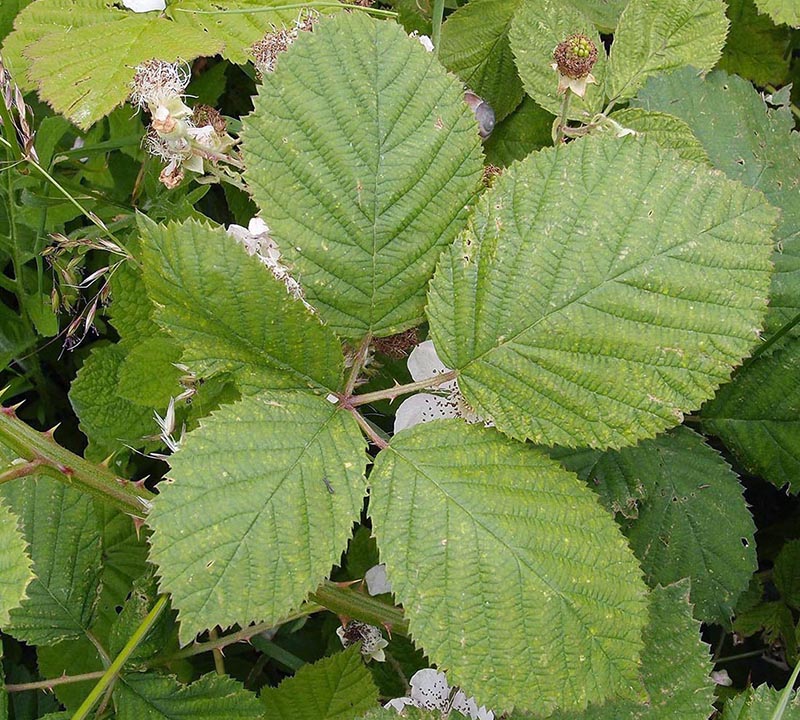
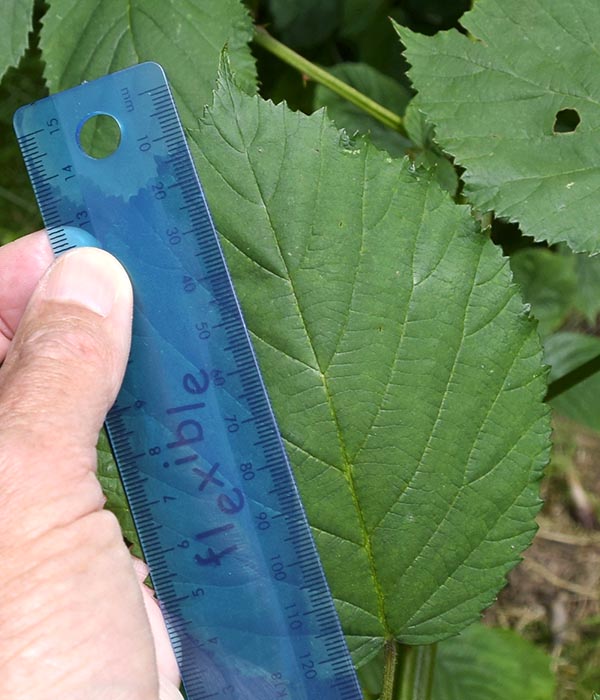

The leaves are thinly and smoothly white-felted below.
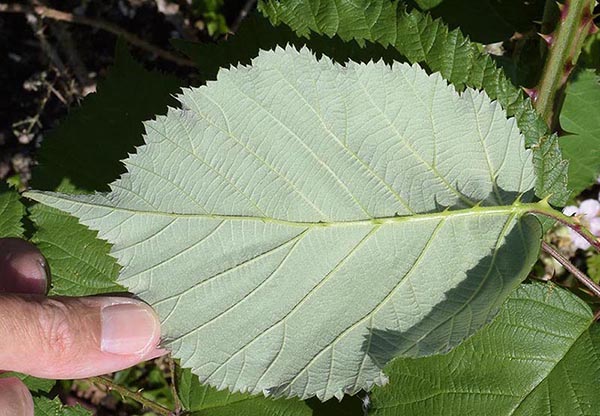

The stems are sharply angled and furrowed with long prickles on the angles. They are sparsely hairy when young and like most Discolores do not have any glands. Younger stems have contrasting red-based prickles, but older ones exposed to the sun become dark red.

